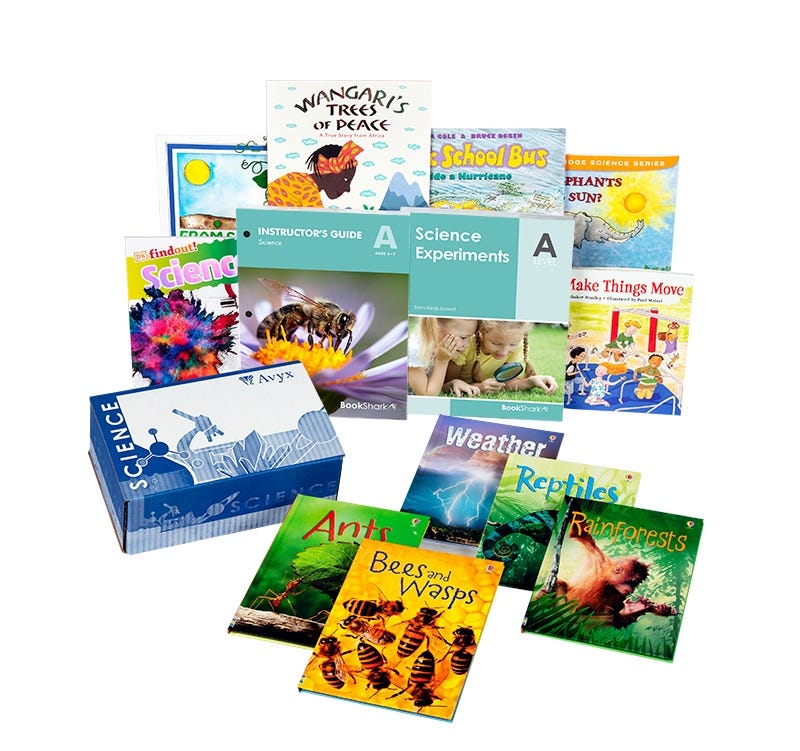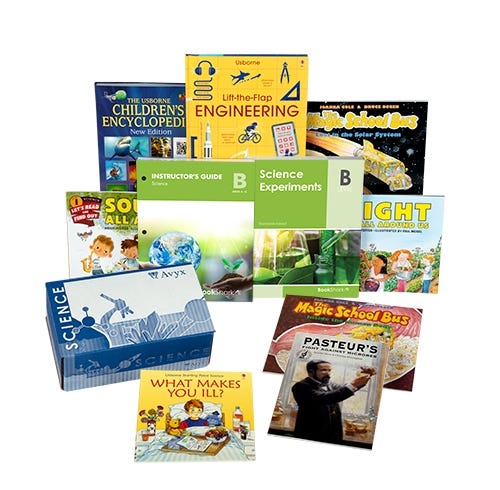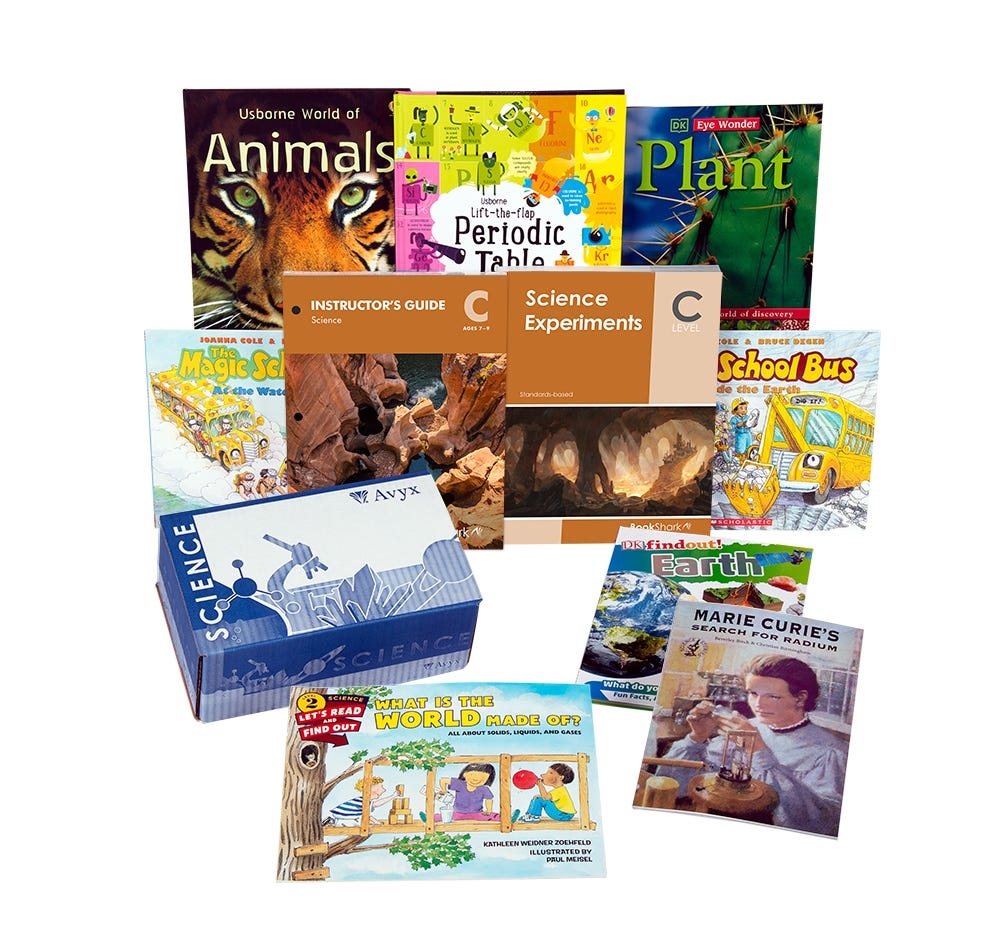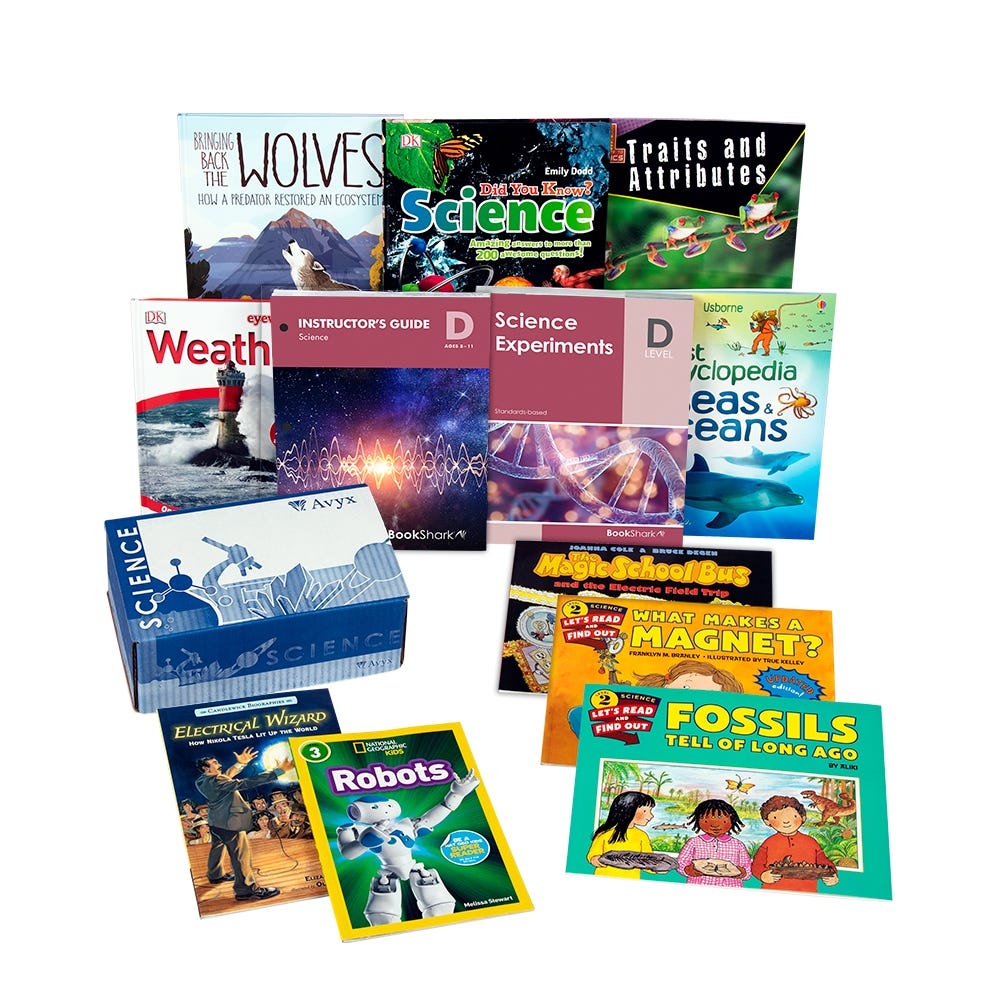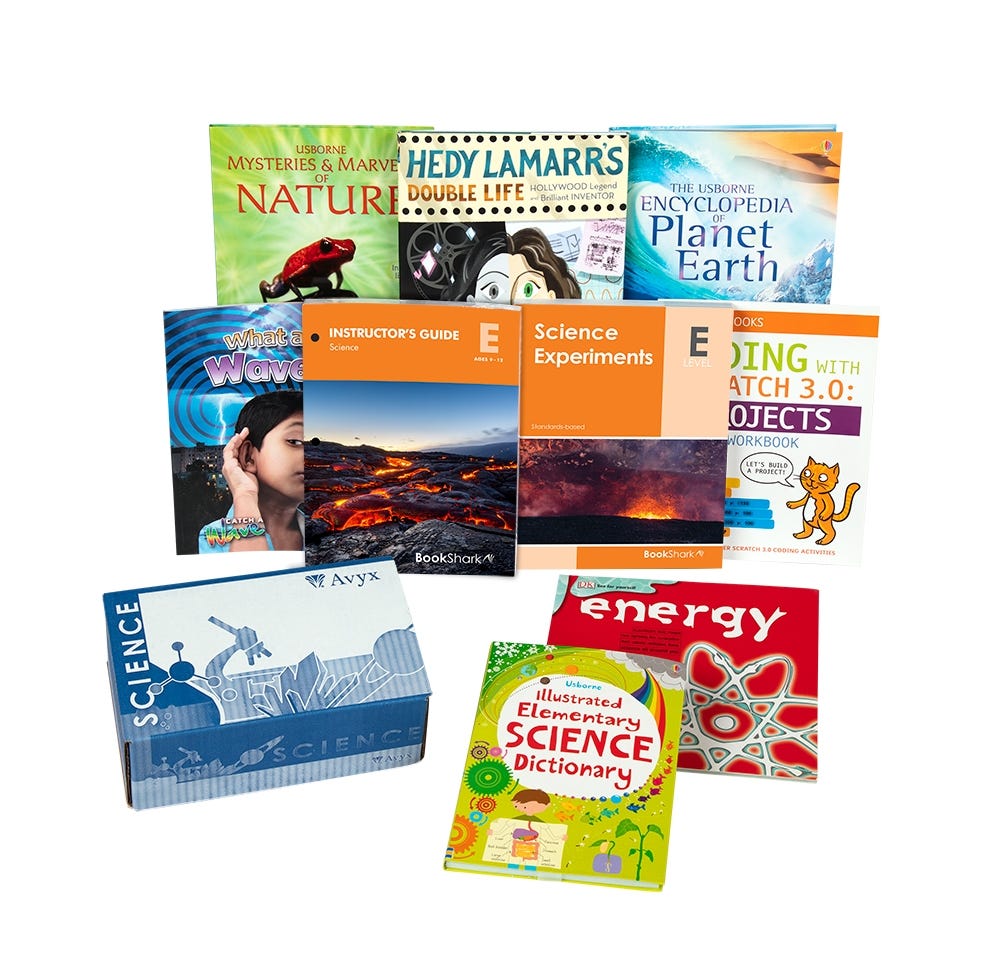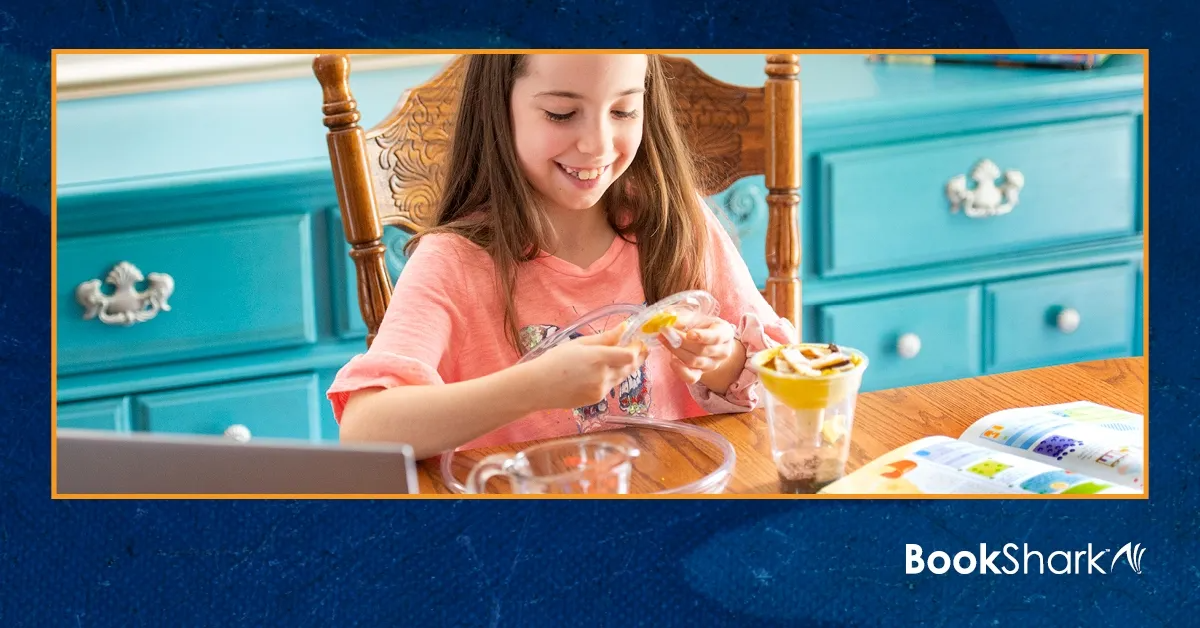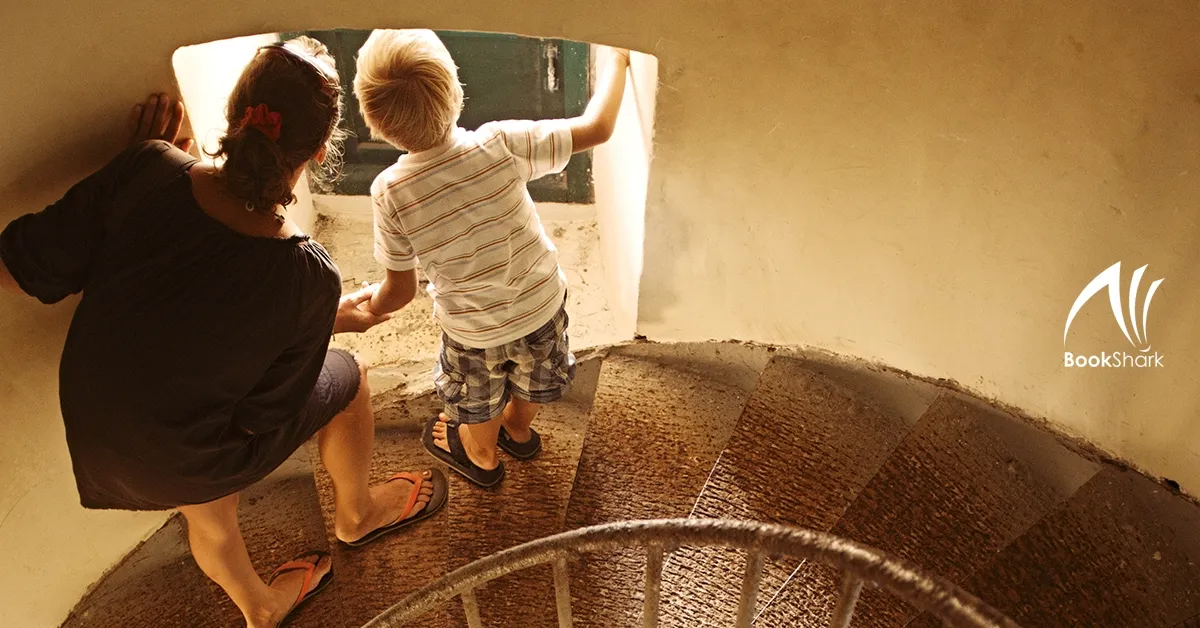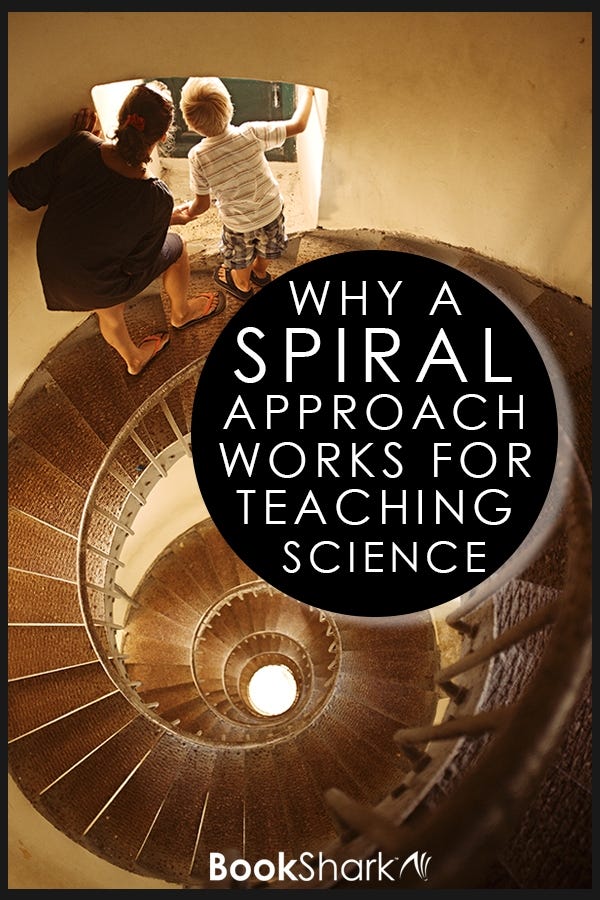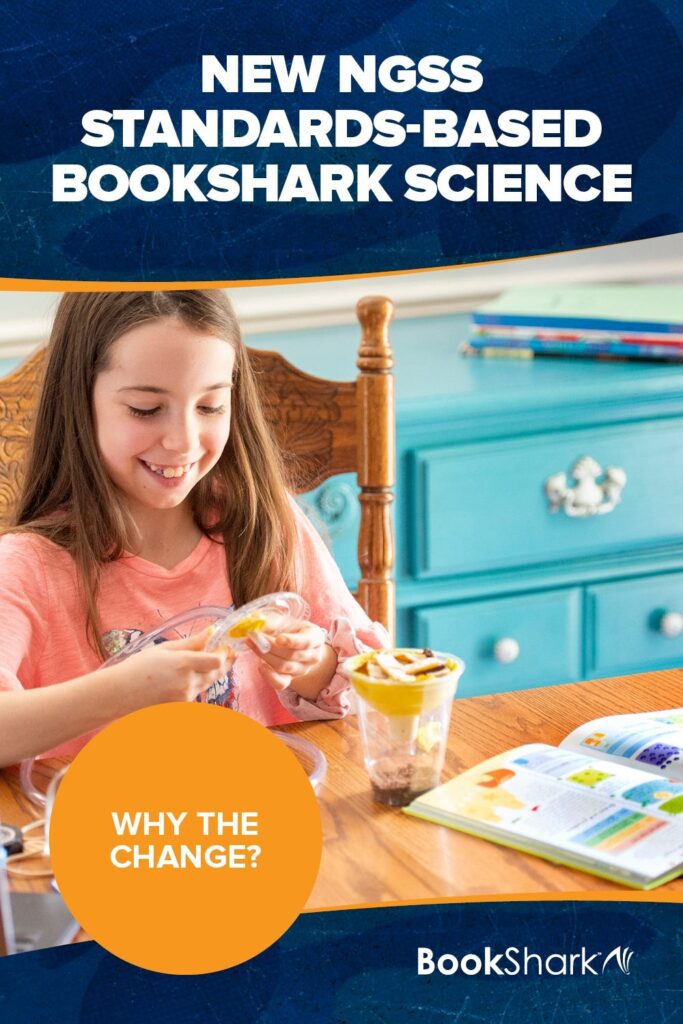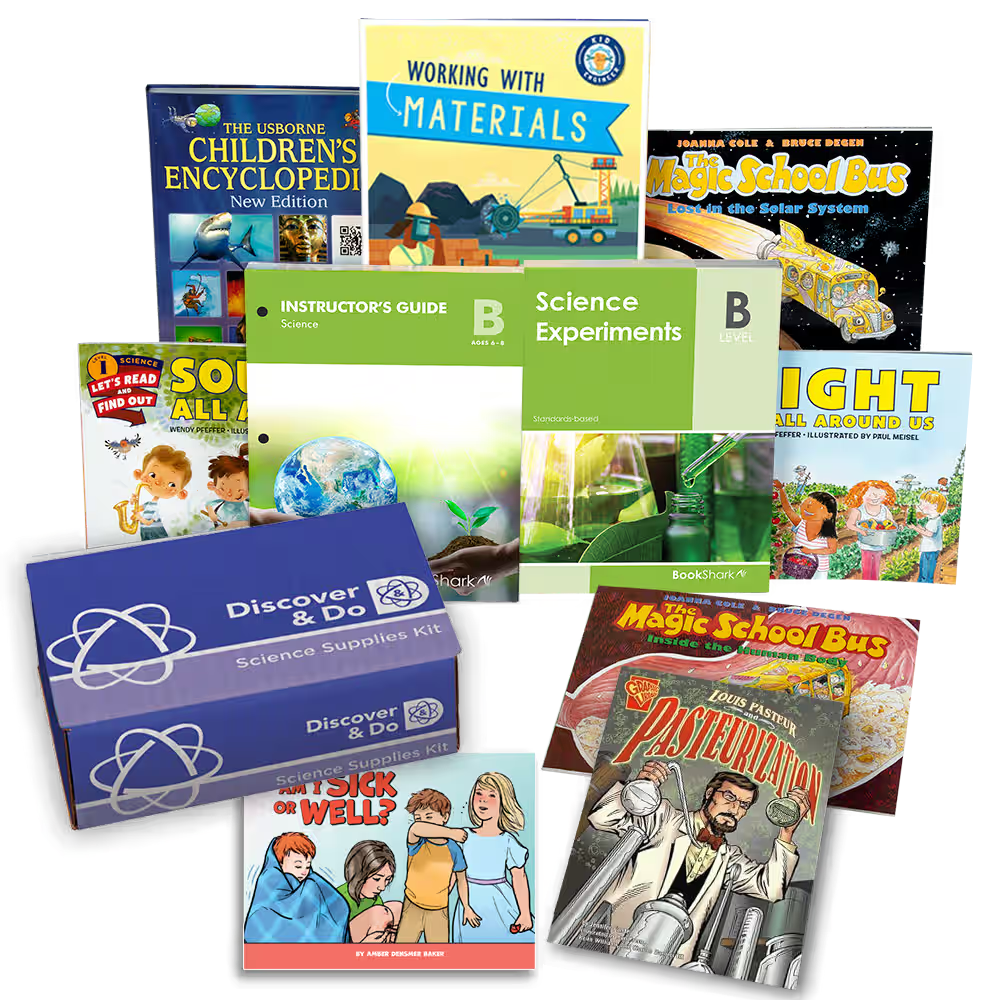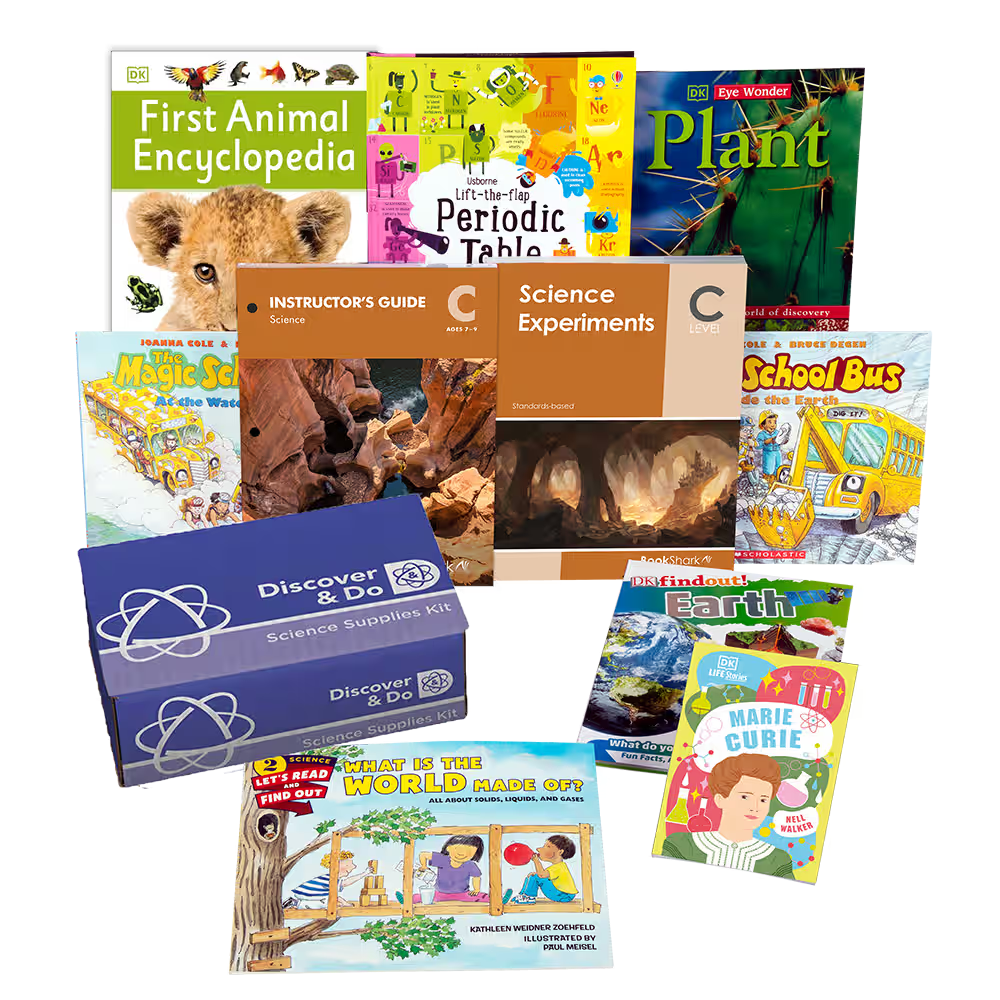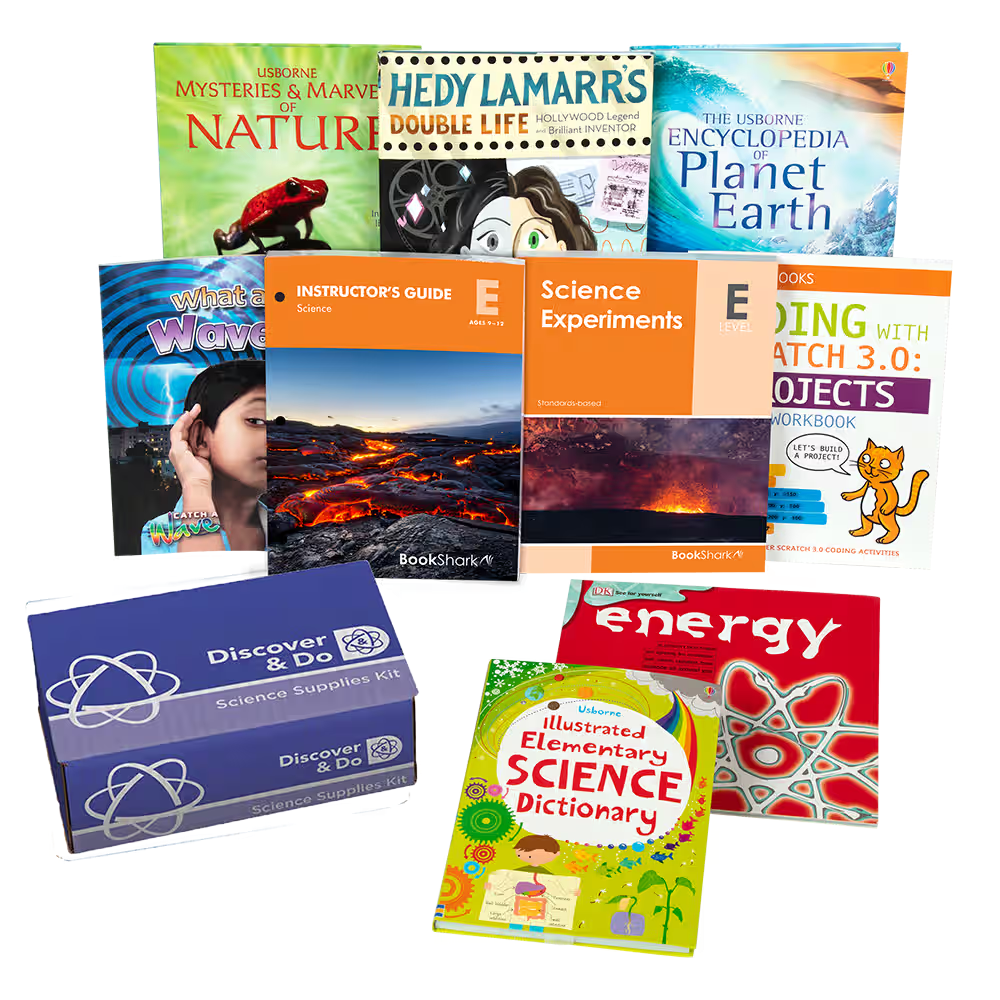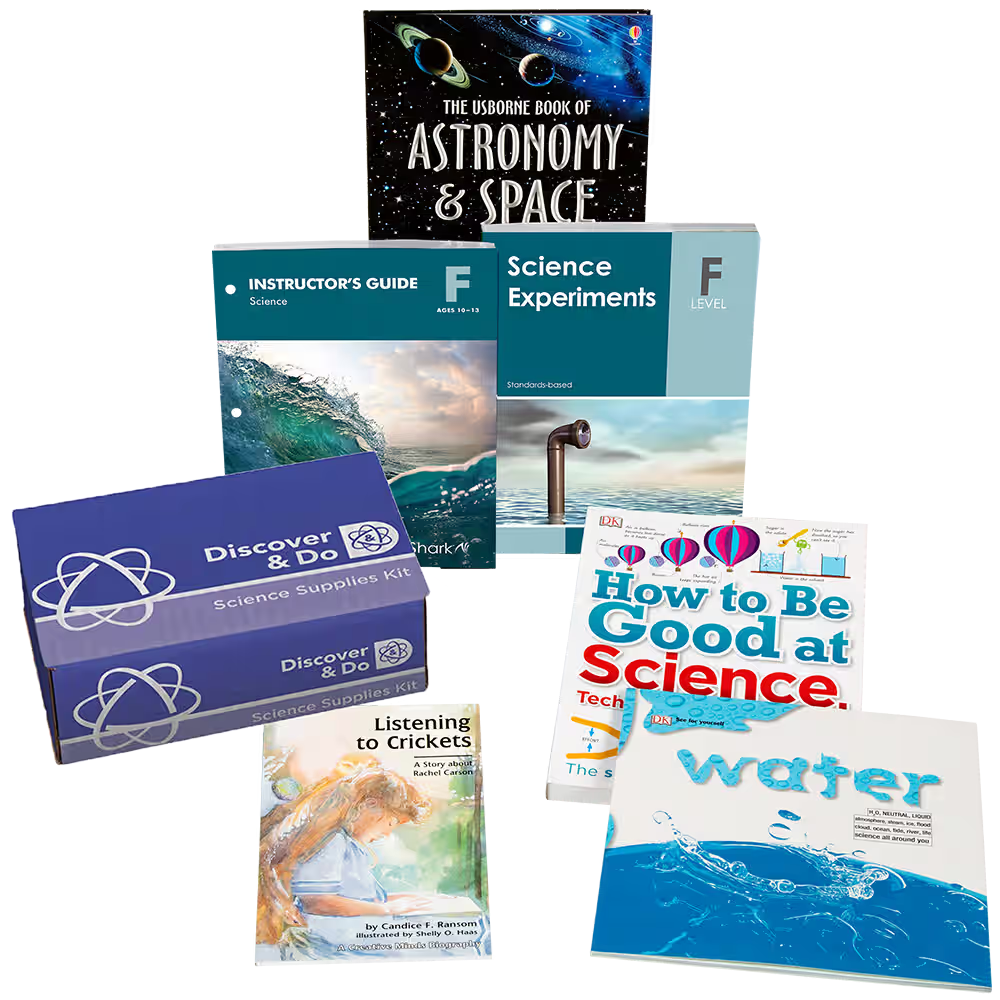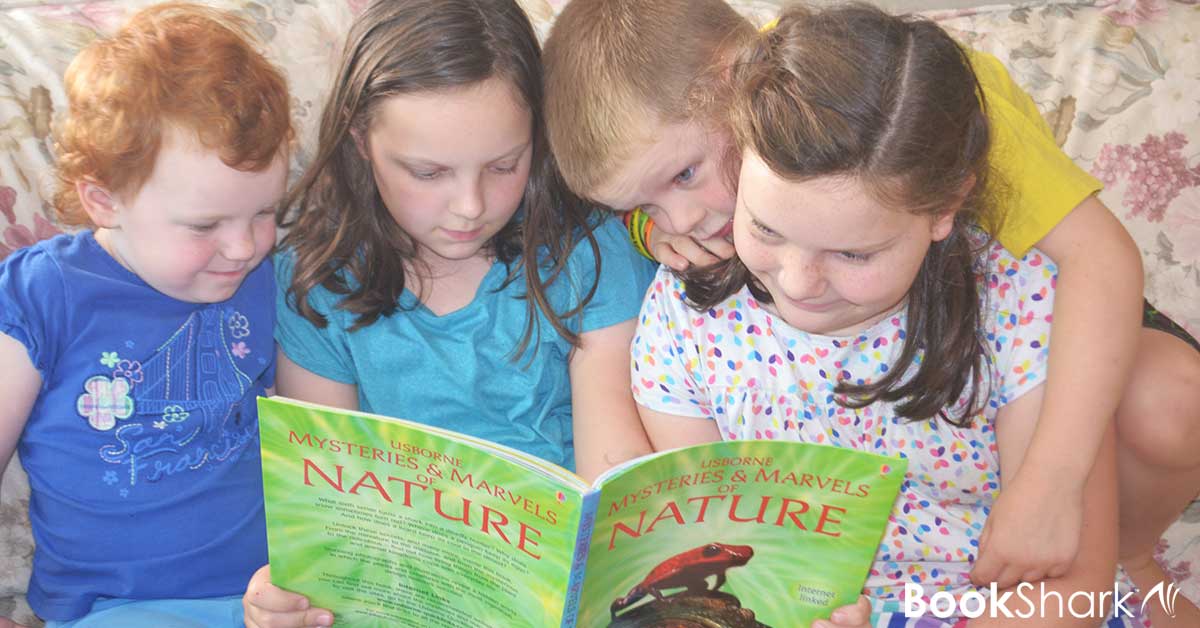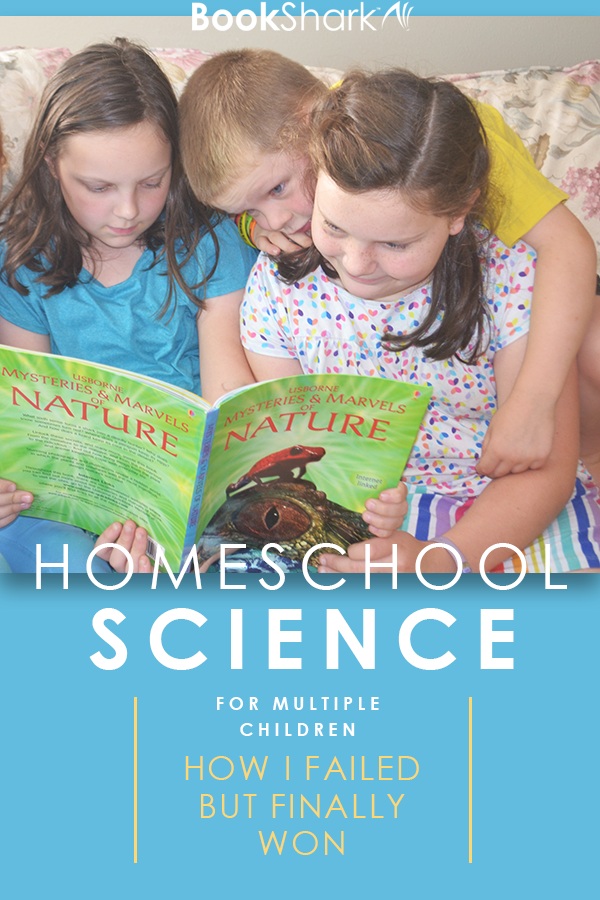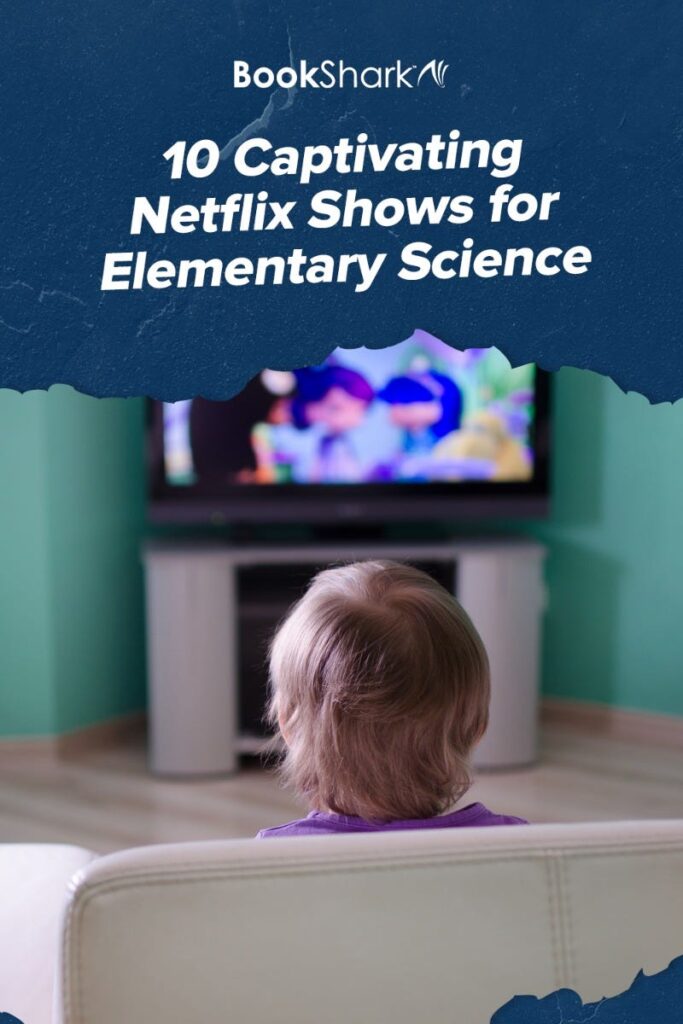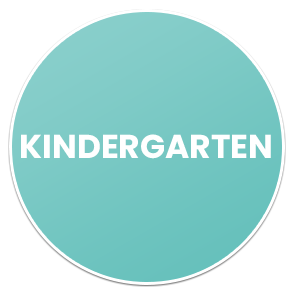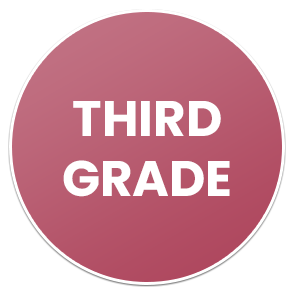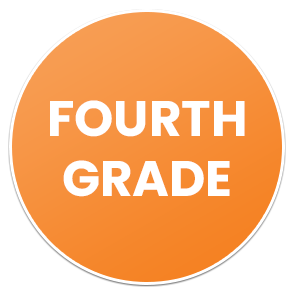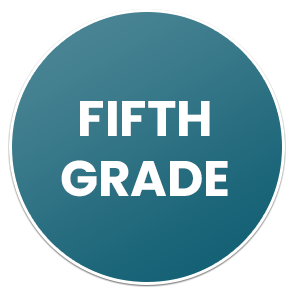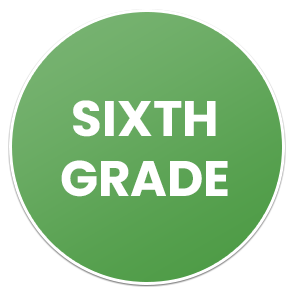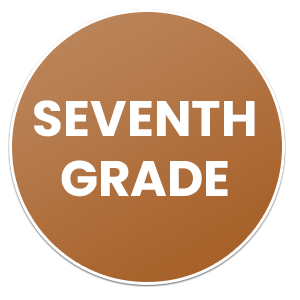The new 2021 BookShark Science for levels A through F¹ was designed with Next Generation Science Standards (NGSS)² in mind. But why would a homeschool curriculum care about outside standards at all?
- Isn’t the BookShark way of reading great books and doing hands-on exploration enough when it comes to learning science? Yes!
- Aren’t homeschoolers allowed to do school their own way, at their own pace, without worrying about adhering to a strict outline of what should be covered year by year? Absolutely!
And yet we never want to become complacent when it comes to providing a top-notch education for your children. So we constantly evaluate our programs to make sure the material is up-to-date, culturally sensitive, and in line with the most current, research-based instructional practices.
Updating Science to Stay Current
Science moves fast! And it’s hard to keep up! That’s why you see Science books being replaced in our packages when the technology pictured in them is more akin to what you might see in a museum than what you’d see in a modern lab or a 21st century home.
When new technology is released, we want your children to learn about it! So, we periodically swap out books and add new content.
Updating Science Curriculum to Reassure Parents
With the influx of 2020 pandemic homeschoolers, we received more questions than ever about accreditation, state standards, standardized testing, and keeping kids on track so they don’t fall behind their peers. Many BookShark families feel a sense of reassurance to know that BookShark meets and exceeds state standards!
We love being able to provide that reassurance to you. BookShark works. It’s a solid curriculum. Kids love it, and kids get turned on to science as a result of this engaging program! Demonstrating how BookShark Science aligns with NGSS standards, for example, is just another way to affirm its high academic quality.
If standards don’t do much to impress you, you can safely ignore them, trusting that BookShark Science is still the robust, spiral approach curriculum you’ve loved for years.
Updating Science to Provide You a More Linear Experience
Over the years, we’ve gotten feedback from BookShark families who were confused about the weekly progression from reading to doing. Many times, the end-of-week activity didn’t match the weekly reading. Although the Instructor’s Guide was purposely designed this way and in no way is a flaw in the educational structure, still many parents were uncomfortable with the jumping around.
We listened to your requests and designed a more linear program in which the weekly activity always aligns with the weekly reading. Was the older way deficient? Not at all, but this new structure provides a progression that families feel better about. And we want you to feel confident. So, we flexed to your preferences!
But Why NGSS?
So, of all the different standards in America, why did we pick Next Generation Science Standards when making Science curriculum updates?
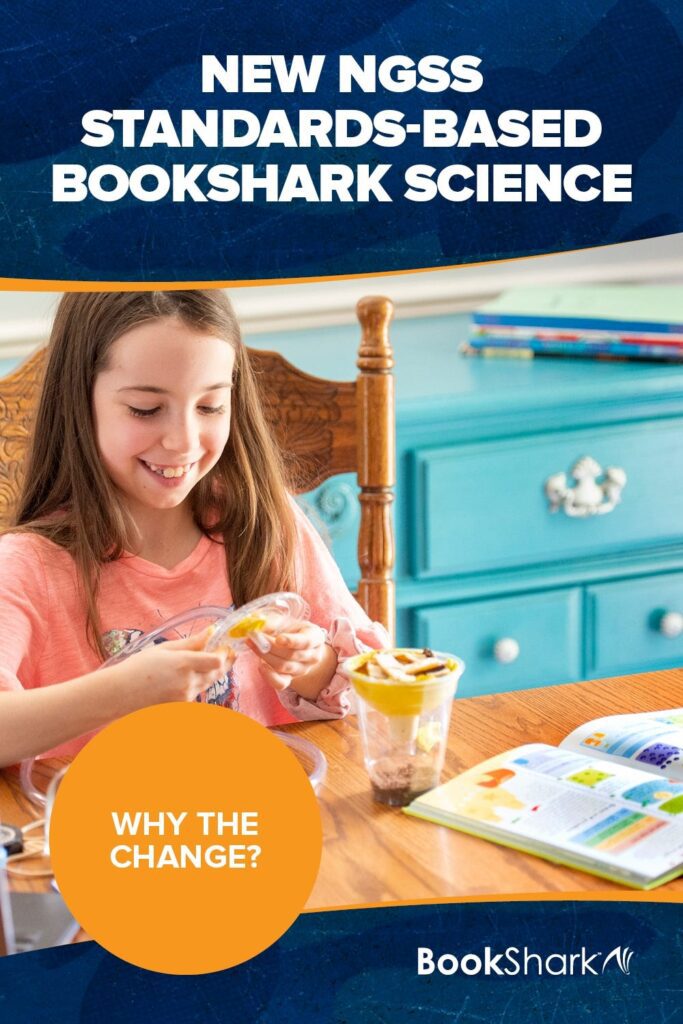
First of all, NGSS standards are both widely accepted and academically solid. NGSS standards were created by states in conjunction with practicing scientists and science-based industries in a variety of fields. The goal was to enable America to continue innovating and leading in the sciences worldwide and to create science jobs for the future. A worthy cause, right?! We want your children to be those scientists and innovators of the future, so we used the NGSS to inform our curriculum updates.
And while the NGSS standards outline what to teach, they don’t preclude our natural methods of reading great books, discussing them, doing simple (no busy work) Activity Sheets, and then exploring with hands-on activities. The NGSS are standards, not curriculum. Thus, BookShark Science remains true to our original design while also accommodating NGSS and giving you the more linear read-about-it-then-do-it sequences most parents prefer.
NGSS Is Not Common Core
You may be wondering if NGSS is another way of saying Common Core. No, NGSS and Common Core are different entities. NGSS standards are not a federally mandated or supported system and adherence to them is not tied to school or state funding. To learn more, including common misconceptions, read the FACT SHEET here.
NGSS Is About Application, Inquiry, and Discovery
There’s an important aspect of NGSS that we want you to be sure to know about. NGSS strongly emphasizes the application of science. In fact, the doing of science is more important than focusing on the facts behind science.
After all, facts are pretty easy to find in our digital age. What’s much harder is
- knowing what questions to ask
- learning how to process data and come to accurate conclusions
- knowing how assimilate information across disciplines
- grasping advanced processes
- seeing how scientific principles apply to real-world situations
- imagining the future of science
These thinking abilities—and a fascination with science itself—are our goals for your children. It’s not about rote memorization of the periodic table of elements or focusing on dates and definitions. While these things are included in BookShark science, we agree with the NGSS that learning is only complete when children can synthesize, draw conclusions, make educated guesses, and imagine innovative uses of technology yet to be developed.
New Science Levels A through F
Visit each Science Package listing to see everything included, samples, and scope and sequence.
New in 2021: Now when you customize your All-Subject Package, you can choose from three different Science levels on the customize tab.
